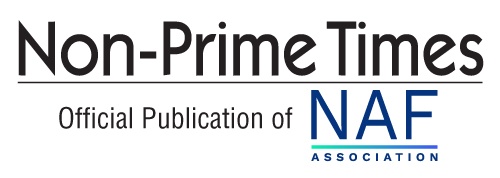It’s hard to believe that in 2023, there are still millions of adults that are unbanked—defined as an individual without access to a checking or savings account. However, according to the Federal Reserve, 4.5 percent of U.S. households—nearly 10.5 million adults—are, in fact, unbanked.
Unbanked consumers typically don’t have access to the same financial resources as their banked counterparts. In fact, four out of five lack access to mainstream credit options. Without access to mainstream lines of credit, these consumers typically seek financing options with buy here pay here (BHPH) dealerships and non-prime speciality lenders.
These specialty lenders that serve this market must understand the behaviors and preferences of under- and unbanked consumers in order to improve portfolio performance, reduce delinquencies and provide a better loan servicing experience.
How Unbanked Americans Pay Bills
Many unbanked Americans rely on less traditional payment methods for their monthly bills such as prepaid cards, mobile wallets and cash. In fact, cash is the overwhelming payment choice for unbanked Americans, with these individuals paying with cash 7 out of 10 times. Their banked counterparts, on the other hand, only use cash for 19 percent of all transactions.
Similarly, unbanked Americans pay 54 percent of their bill payments with cash, compared to only 5 percent for Americans with traditional bank accounts.
Mobile Wallets
Another interesting payment trend by the unbanked population is the use of mobile wallets such as Venmo, PayPal and Cash App. Within this segment of the population, nearly 64 percent use mobile wallets to make bill payments. This is interesting because 55 percent of these consumers do not link their mobile wallets to additional funding sources such as a prepaid card.
Instead, it appears these consumers use their mobile wallets as pseudo bank accounts, using peer-to-peer (P2P) transfers and other means to fund accounts in order to make bill payments.
Another surprising statistic from the aforementioned survey was the correlation between age and unbanked consumers. Just under half (44 percent) of unbanked consumers are younger than 35, compared to 28 percent of banked consumers. The common narrative surrounding younger consumers is their preference for digital payment methods, yet the overwhelming reliance on cash for unbanked individuals could suggest otherwise.
Serving Unbanked Consumers with Alternative Payment Choices
Competition for creditworthy consumers against credit unions and banks is at an all time high for non-prime auto lenders. In order to compete in this market, lenders can take specific approaches to service under- and unbanked consumers.
For example, offering all major payment options across multiple channels—including cash at retail and mobile wallet payments—can appeal to unbanked consumers. This is also beneficial to lenders because it can reduce the cost of acceptance and increase on-time payments.
If lenders only accept cash payments in person, it requires the customer to visit the lender’s location during business hours in order to make their transaction with an employee or kiosk. Removing friction from the payment process not only improves the customer experience, but it can also help reduce delinquency.
Mobile Wallet Payment Options
If unbanked consumers are indeed leaning on mobile wallets to make bill payments, lenders should consider enabling major wallet options such as Apple Pay, Google Pay, PayPay, Venmo and Cash App. They can also increase flexibility by allowing consumers to make payments from a stored balance in the wallet rather than just using the wallet as a means to facilitate card or bank account transactions.
Finally, lenders should consider ways to make the payment experience as flexible and seamless as possible for their customers. This can be accomplished in a number of ways including:
• Offering convenient, mobile-first payment reminders by SMS, email or push notification
• Enabling flexible autopay features with additional scheduling (i.e. weekly), mobile wallet and simple enrollment/cancellation options
• Built-in bilingual options to allow self-service for non-English speaking customers
Which novel ways are you serving unbanked individuals in your business? Share with us by emailing [email protected], or by dropping us a note on our website.



